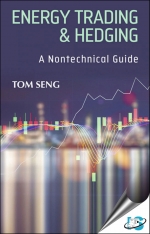Tab Article
This book focuses primarily on the energy products that are financially traded on the New York Mercantile Exchange: crude oil, natural gas, unleaded gasoline, and heating oil. These commodities are the most common ones used for hedging energy commodity risk. Each of these products has a profound effect on the United States and international economies. It discusses several of the factors that influence energy price direction, the financial instruments used in the market, and how commercial entities utilize these instruments to hedge the risks inherent in energy production and consumption, such as price and physical risk. It also addresses the use of energy financial derivatives strictly for profit (speculative trading) and the exchanges that make efficient and competitive trading possible. The physical cash market is addressed along with the major industry publications that produce market prices, known as postings or indexes. Additionally, the book briefly discusses technical analysis, using charts to identify price trends and predict directional changes. Finally, the book discusses the need for stringent controls on the trading of financial energy derivatives to avoid some of the more notorious pitfalls that have led to the collapse of major global companies and institutions.
Features and Benefits
- Supply / Demand Fundamentals
- Market overviews (financial and physical)
- Contracts
- Derivatives
- Technical Analysis
- Risk Controls
Audience
- Field level personnel
- Management
- Energy lending and finance professionals
- Anyone who seeks to understand how, or relies upon, energy markets
- Students


